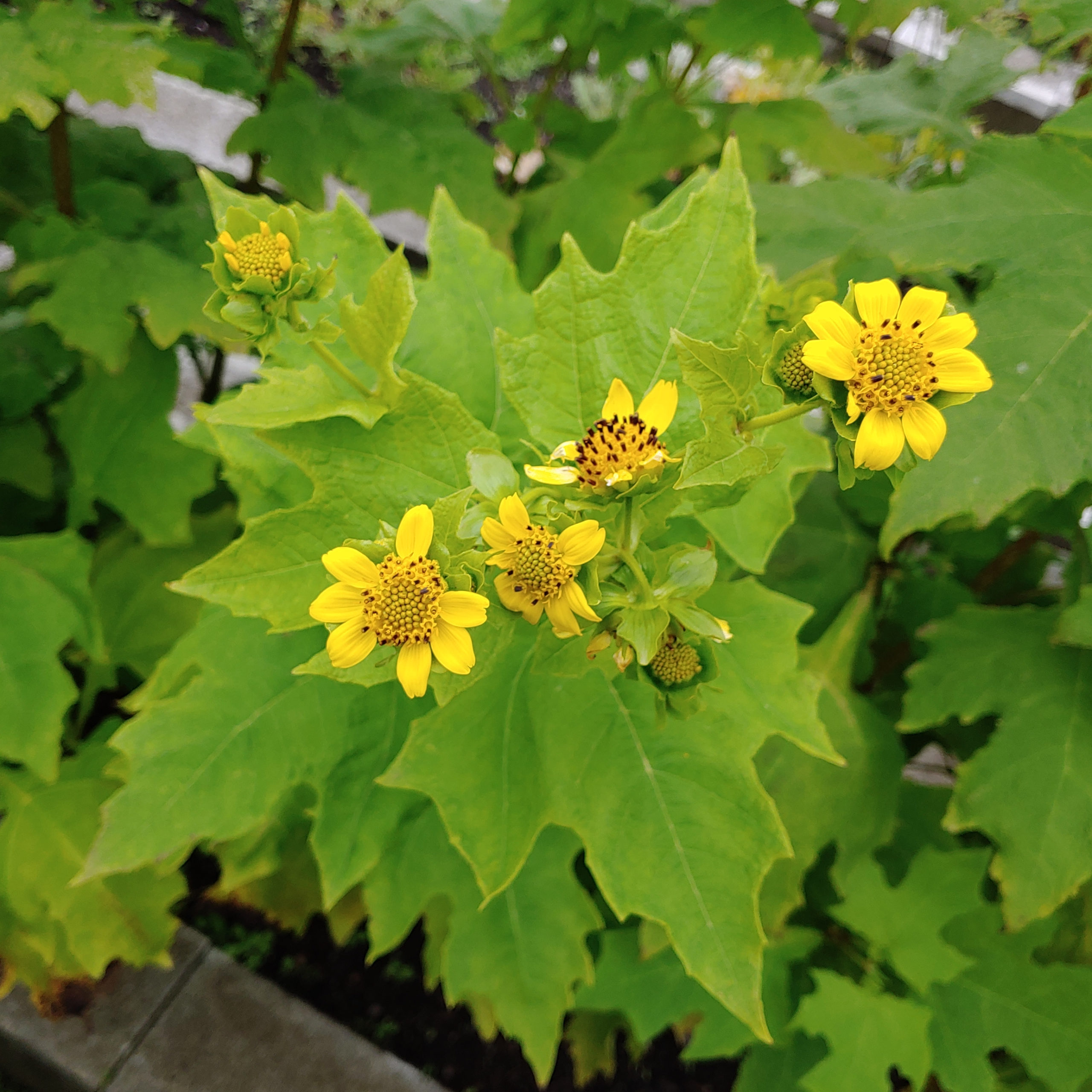No products in the cart.
| Yacon wild relatives information |
| These seeds are classified as breeding seeds and germination is not guaranteed. |
Smallanthus uvedalius is the only member of the genus that grows in freezing climates. Its natural range stretches from Canada to Central America. If it can be crossed, it may be useful in yacon breeding, particularly for introducing greater cold resistance. Like most of yacon’s other relatives, is not really itself an edible plant. The leaves at least were traditionally used as an herbal remedy for several conditions, so it doesn’t appear to be dangerous to consume in small amounts, but I don’t think anybody has really tested it as a food. Unlike yacon, it does not make storage tubers. S. uvedalius plants look similar to yacon, but are usually smaller and flower earlier. Seeds can be difficult to germinate, but it is possible to get germination over 50% by chipping or filing the seeds. I have not been successful in obtaining crosses with yacon, but that doesn’t mean that it isn’t possible. Inter-species crosses often have a very low rate of success. I have been able to cross S. uvedalius with S. maculatus (no germinations yet), and S. maculatus with yacon, so it might be possible to bridge traits from S. uvedalius to yacon via S. maculatus if we can get any of the seeds to germinate. I grow all Smallanthus species together in a block, hoping for chance crosses, so pay close attention to your seedlings, as you might discover a lucky outcrossing.
| Availability |
|---|
Only logged in customers who have purchased this product may leave a review.


Reviews
There are no reviews yet.